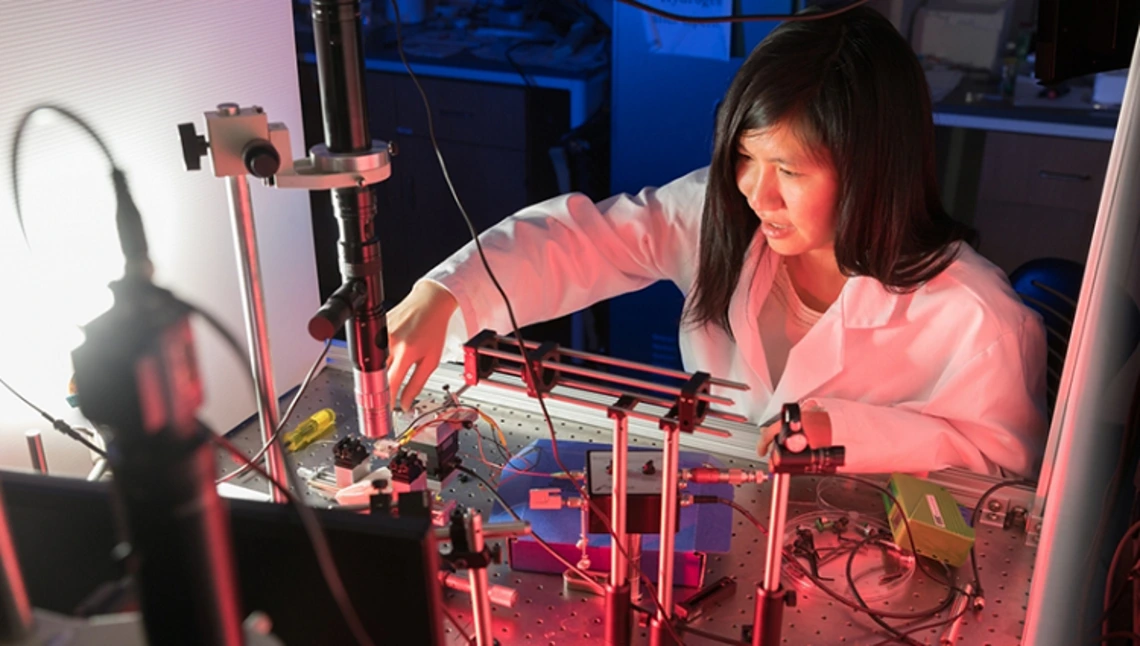Q&A: Su Co-Authors Paper on Ovarian Cancer Detection

BME assistant professor Judith Su recently co-authored a study about technology based out of her Little Sensor Lab that can detect early signs of cancer. The paper, "An Integrated Approach to Protein Discovery and Detection From Complex Biofluids," details how FLOWER (frequency locked optical whispering evanescent resonator) can lead to a new standard for health tests that is less invasive than a pap smear.
How did the idea for FLOWER first occur to you as a possibility?
The idea for FLOWER came to me when I was a graduate student at Caltech through a conversation I had with Carver Mead, who coined the term Moore’s Law. I was working on the problem of label-free single molecule detection but was unable to repeat the work of the previous student. I was discussing with him the issues I was facing in my experiments, and he suggested using frequency locking which became a main aspect of FLOWER. I’ve visited Caltech several times post-graduation and have always learned from my conversations with people there. Funnily enough, one of my now colleagues, Khanh Kieu, was also present at that conversation with Carver.
FLOWER has been applied to a wide variety of applications from COVID-19 identification to Alzheimer’s Disease. How can FLOWER possibly identify so many different kinds and types of biomarkers in health care?
FLOWER is similar to, for example, a microscope in the sense that it is a platform technology, meaning it can be adapted for a variety of applications. As long as we have appropriate capture agents for a particular biomarker, FLOWER can selectively detect a wide range of markers. This versatility allows FLOWER to be applied to diverse applications in health care, from identifying COVID-19 to detecting biomarkers associated with Alzheimer’s Disease.
Now that you’ve shown FLOWER can identify biomarkers for ovarian cancer, what happens next?
For this project we’ve identified a potential biomarker. The next step would be establishing how good of a biomarker this is using a larger group of patients. FLOWER has a lot of exciting applications, ranging from basic science to environmental monitoring and medical diagnostics. Hopefully one day in the not-so-distant future we’ll have enough manpower and resources to explore them all!
